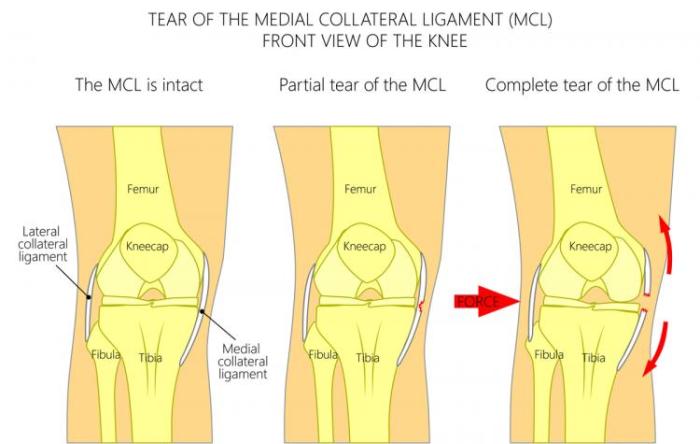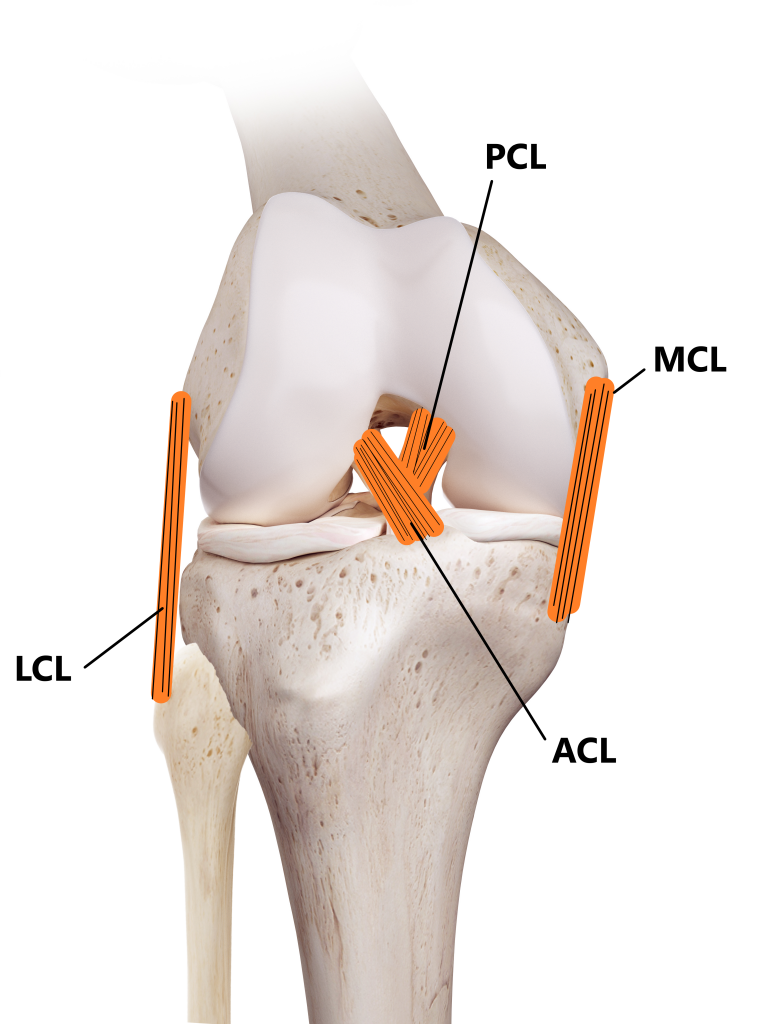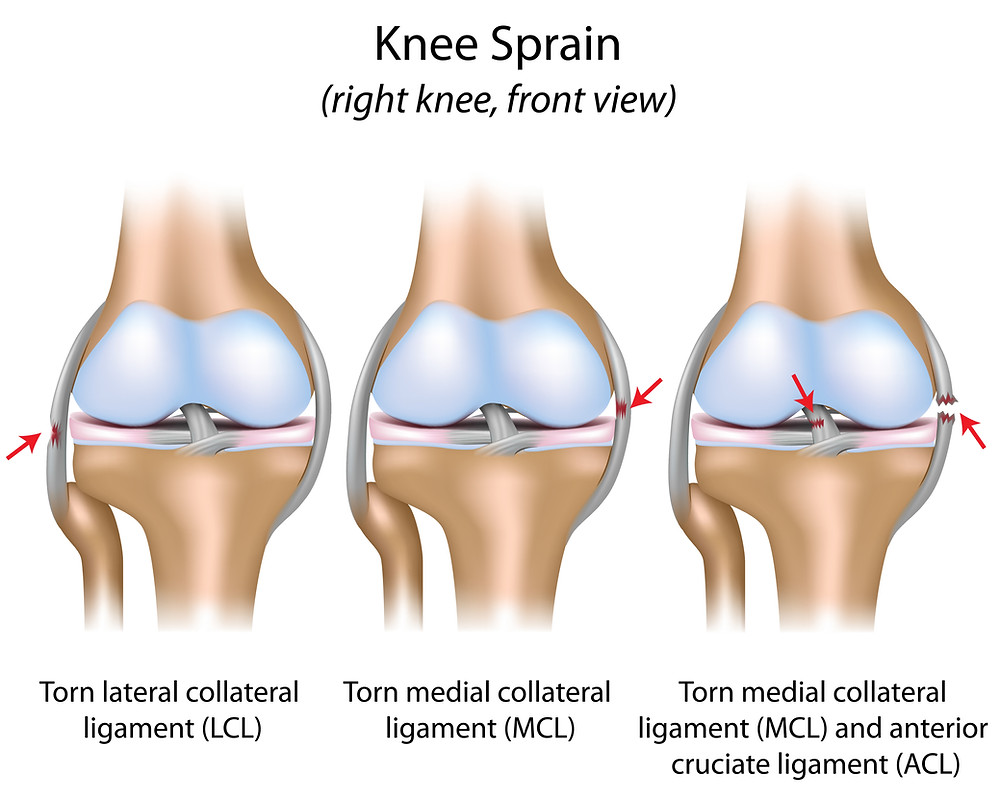MCL Injury

If you are an athlete, there is a good chance you have heard of the medial collateral ligament (MCL). The MCL is one of four main ligaments in the knee, and it is responsible for stabilizing the knee when it is bent. An MCL injury can be extremely painful and debilitating, so it is important to know how to properly treat one. In this comprehensive guide, we will give you all the information you need to know about MCL injuries. We will cover everything from symptoms and treatment options to rehab and prevention tips. So, whether you are a weekend warrior or a professional athlete, read on for everything you need to know about MCL injuries.

Symptoms of Medial Collateral Ligament Tears
MCL injuries can range from mild to severe, and the symptoms will vary depending on the severity of the injury. With a mild MCL injury, you may experience some pain and swelling around the knee joint. You may also have difficulty moving your knee or notice that it feels unstable. However, you should still be able to walk and put weight on your injured leg.
With a more severe medial collateral ligament tear, you may experience more intense pain and swelling. You may also hear a popping sound when the ligament is torn. Additionally, you will likely have difficulty bearing weight on your injured leg and may even need to use crutches to walk. In some cases, severe MCL injuries can also cause the knee to give out or lock up.
If you experience any of these symptoms after an injury to your knee, it is important to see a doctor right away. They will be able to properly diagnose your injury and recommend the best course of treatment.
Diagnosis of MCL Injuries

If you suspect that you have an MCL injury, the first step is to see a doctor. They will likely ask you about your symptoms and how the injury occurred. They will also perform a physical examination of your knee. During the physical exam, they will check for tenderness, swelling, and instability. They may also order X-rays or an MRI. These imaging tests can help to rule out other possible injuries.
Treatment Options for MCL Tears
Treatment options for MCL injuries will vary depending on the severity of the injury. For mild MCL injuries, your doctor may recommend a course of conservative treatment. This may include rest, ice, compression, and elevation (RICE). You may also need to wear a knee brace to stabilize the joint and avoid further injury.
In more severe cases, you may need surgery to repair the damaged ligament. After surgery, you will likely need the help of a physical therapist to regain range of motion and strength in your knee. Physical therapy along with elastic bandage can help you heal from the tear.
Rehabilitation and Prevention Tips
Once you have fully recovered from your MCL tear, there are several things you can do to help prevent future injuries. First, it is important to strengthen the muscles around your knee joint. This will help to support the knee and reduce stress on the ligament. Additionally, you should focus on improving your flexibility. Tight muscles and joints are more susceptible to injury, so maintaining a good stretch routine can help reduce your risk of re-injury.
Finally, it is important to be mindful of your activity level. If you return to high-impact activities too soon, you could re-injure your MCL. So, make sure to ease back into things and listen to your body. If something feels wrong, stop and rest. If one feels worn out, rubber band usage can be helpfulwhile doing these activities. By following these simple tips, you can help prevent future MCL injuries and enjoy a healthy, active lifestyle.
If you have suffered an MCL injury, it is important to seek treatment right away. The sooner you start treatment, the sooner you will be on your way to recovery. With proper treatment and rehabilitation, you can fully recover from your injury and get back to your normal activities. So, don’t wait – if you think you have an MCL injury, see a doctor today.

Frequently Asked Questions
MCL injuries can range from mild to severe. In most cases, they are treatable with conservative methods such as RICE (rest, ice, compression, and elevation).
However, severe MCL injuries may require surgery.
If you have a torn MCL, you may still be able to walk. However, you may experience pain and swelling around the knee joint.
Additionally, you may have a hard time keeping the knee stable. If you have any of these symptoms, it is important to see a doctor right away.
Mild MCL injuries may heal on their own. However, more severe injuries will require treatment. In some cases, surgery may be necessary to repair the damage.
The success rate of MCL surgery is generally very high. Most people who have the procedure experience a full recovery and are able to return to their normal activities.
MCL injuries can cause long-term pain and instability in the knee joint. Additionally, they may increase your risk of developing arthritis.
If you have an MCL injury, it is important to seek treatment right away to avoid these complications.
MCL pain is usually felt on the inner part of the knee joint. You may also experience swelling and tenderness around the area. Unlike anterior cruciate ligament injuries, medial collateral ligament injuries are not typically associated with a significant loss of range of motion. You can read more information on the condition from organizations like Nemours Foundation.
MCL swelling can last for several weeks. However, it should gradually improve with time. If the swelling does not go down or if you experience increasing pain, it is important to see a doctor.
3 Ways to Level Up Your Rehab and Injury Prevention With Us





